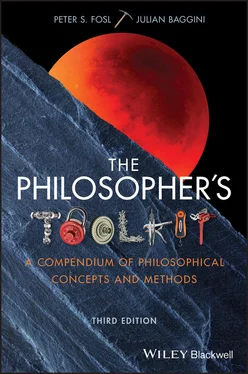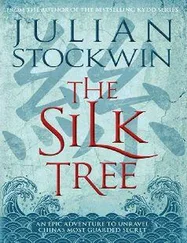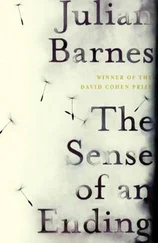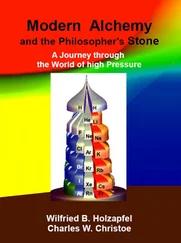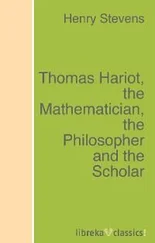The place of reason in philosophy
It’s not universally realised that reasoning comprises a great deal of what philosophy is about. Many people have the idea that philosophy is essentially about ideas or theories about the nature of the world and our place in it that amount just to opinions . Philosophers do indeed advance such ideas and theories, but in most cases their power, their scope, and the characteristics that distinguish them from mere opinion stem from their having been derived through rational argument from acceptable premises. Of course, many other regions of human life also commonly involve reasoning, and it may sometimes be impossible to draw clean lines demarcating philosophy from them. (In fact, whether or not it is possible to demarcate philosophy from non‐philosophy is itself a matter of heated philosophical debate!)
The natural and social sciences are, for example, fields of rational inquiry that often bump up against the borders of philosophy (especially in inquiries into the mind and brain, theoretical physics, and anthropology). But theories composing these sciences are generally determined through certain formal procedures of experimentation and reflection to which philosophy has little to add. Religious thinking sometimes also enlists rationality and shares an often‐disputed border with philosophy. But while religious thought is intrinsically related to the divine, sacred, or transcendent – perhaps through some kind of revelation, article of faith, or ritualistic practice – philosophy, by contrast, in general is not.
Of course, the work of certain prominent figures in the Western philosophical tradition presents decidedly non‐rational and even anti‐rational dimensions (for example, that of Heraclitus, Kierkegaard, Nietzsche, Heidegger, and Derrida). We will examine the non‐argumentative philosophical methods of these authors in what follows of this book. Furthermore, many include the work of Asian (Confucian, Taoist, Shinto), African, Aboriginal, and Native American thinkers under the rubric of philosophy, even though they seem to make little use of argument and have generally not identified their work as philosophical.
But, perhaps despite the intentions of its authors, even the work of non‐standard thinkers involves rationally justified claims and subtle forms of argumentation too often missed. And in many cases, reasoning remains on the scene at least as a force with which thinkers must reckon.
Philosophy, then, is not the only field of thought for which rationality is important. And not all that goes by the name of philosophy is argumentative. But it is certainly safe to say that one cannot even begin to master the expanse of philosophical thought without learning how to use the tools of reason. There is, therefore, no better place to begin stocking our philosophical toolkit than with rationality’s most basic components, the subatomic particles of reasoning – ‘premises’ and ‘conclusions’.
For most of us, the idea of a ‘conclusion’ is as straightforward as a philosophical concept gets. A conclusion is just that with which an argument concludes, the product and result of an inference or a chain of inferences, that which the reasoning claims to justify and support. What about ‘premises’, though? Premises are defined in relation to the conclusion. They are, of course, what do the justifying. There is, however, a distinctive and a bit less obvious property that all premises and conclusions must possess.
In order for a sentence to serve either as a premise or as a conclusion, it must exhibit this essential property: it must make a claim that is either true or false. A sentence that does that is in logical terms called a statement or proposition .
Sentences do many things in our languages, and not all of them possess that property and thence not all of them are statements. Sentences that issue commands, for example (‘Forward march, soldier!’), or ask questions (‘Is this the road to Edinburgh?’), or register exclamations (‘Wow!’), are neither true nor false. Hence, it’s not possible for sentences of those kinds to serve as premises or as conclusions.
This much is pretty easy, but things can get sticky in a number of ways. One of the most vexing issues concerning arguments is the problem of implicit claims. That is, in many arguments, key premises or even the conclusion remain unstated, implied or masked inside other sentences. Take, for example, the following argument: ‘Socrates is a man, so Socrates is mortal.’ What’s left implicit is the claim that ‘all men are mortal’. Arguments with unstated premises like this are often called enthymemes or enthymemetic .
It’s also the case that sometimes arguments nest inside one another so that in the course of advancing one, main conclusion several ancillary conclusions are proven along the way. Untangling arguments nested in others can get complicated, especially as those nests can pile on top of one another and interconnect. It often takes a patient, analytical mind to sort it all out (just the sort of mind you’ll encounter among philosophers).
In working out precisely what the premises are in a given argument, then, ask yourself first what the principal claim is that the argument is trying to demonstrate. Then ask yourself what other claims the argument relies upon (implicitly or explicitly) in order to advance that demonstration. Sometimes certain words and phrases will explicitly indicate premises and conclusions. Phrases like ‘therefore’, ‘in conclusion’, ‘it follows that’, ‘we must conclude that’, and ‘from this we can see that’ often indicate conclusions. (‘The DNA, the fingerprints, and the eyewitness accounts all point to Smithers. It follows that she must be the killer.’) Words like ‘because’ and ‘since’, and phrases like ‘for this reason’ and ‘on the basis of this’, on the other hand, often indicate premises. (For example, ‘Since the DNA, the fingerprints, and the eyewitness accounts all implicate Smithers, she must be the killer.’)
Premises of an argument, then, compose the set of claims from which the conclusion is drawn. In other sections, the question of precisely how we can justify the move from premises to conclusion will be addressed in more in more detail (see 1.4 and 4.7). But before we get that far, we must first ask, ‘What justifies a reasoner in entering a premise in the first place?’
Grounds for premises and Agrippa’s trilemma?
There are several important accounts about how a premise can be acceptable. One is that the premise is itself the conclusion of a different, solid argument (perhaps a nested argument). As such, the truth of the premise has been demonstrated elsewhere. But it is clear that if this were the only kind of justification for the inclusion of a premise, we would face an infinite regress. That is to say, each premise would have to be justified by a different argument, the premises of which would have to be justified by yet another argument, the premises of which … ad infinitum .
Now, there are philosophers called infinitists for whom regresses of this sort are not problematic. Unless, however, one wishes to live with the infinite regress, one must find another way of determining sentences acceptable to serve as premises.
A compelling option for many has been to conceive of truths not as a hierarchy but rather as a network so that it’s the case that justifications ultimately just circle back around to compose a coherent, mutually supporting but ultimately anchor‐less web. The objective of philosophers and other theorists, from this point of view, becomes a project of conceptual weaving and embroidery, stitching together concepts and arguments in consistent and meaningful ways to construct a coherent conceptual fabric. Philosophers who conceive of truths, theories, and reasoning in this way are called coherentists .
Читать дальше
